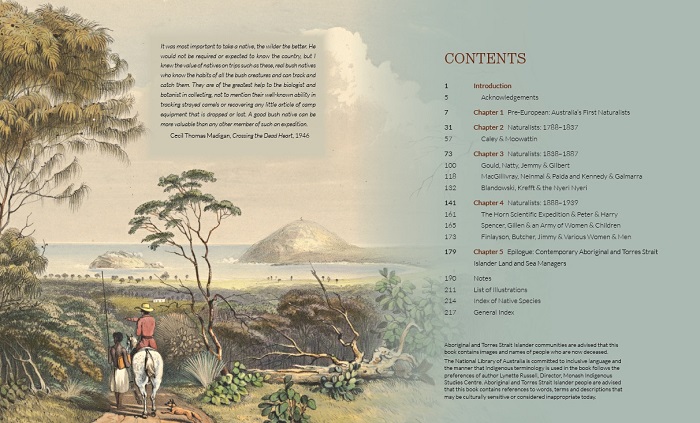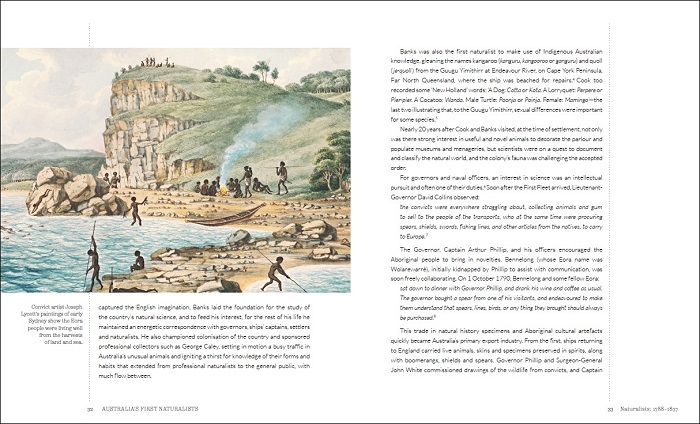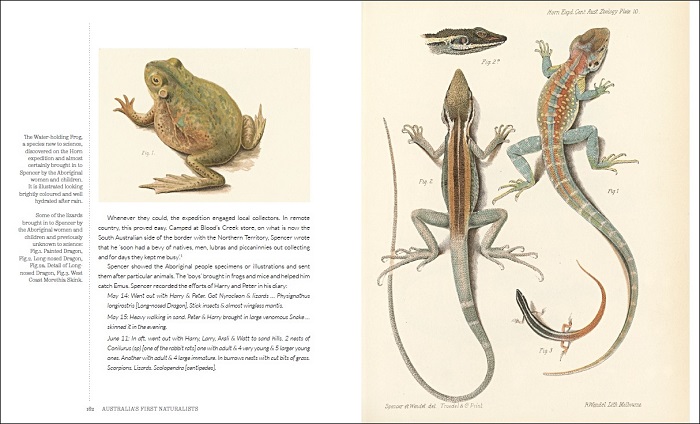NLA Publishing author Lynette Russell reflects on the process of writing her new book, Australia's First Naturalists: Indigenous Peoples' Contribution to Early Zoology.
When approached by Susan Hall of the National Library with the offer to co-author Australia's First Naturalists with natural history writer and zoologist Penny Olsen, I was equal parts honoured and chuffed. Penny is an author I’ve long admired; indeed, I had bought numerous copies of her book Upside Down World: Early European Impressions of Australia's Curious Animals as gifts for family members and the quality of NLA Publishing books had impressed me. The invitation from Susan and Penny came at the same time as my good friends John Maynard and Victoria Haskins had published their wonderful book Living with the Locals: Early Europeans' Experience of Indigenous Life. The chance to co-author this book was something I was very keen to do.
I have been researching and writing about Aboriginal history for nearly 30 years. I have a particular interest in the nineteenth century, the contact period and the relationships that emerged out of the arrival of European newcomers and the first people. In the early days, I was keen to understand how families like my own had come into being. Like many people I have ancestors on both sides of the frontier: convicts, free settlers and Aboriginal people. Over the years I had become fascinated by life before the arrival of the British. I was awestruck by how over millennia the First Nations people had lived—thrived—in a harsh and often inhospitable land.

In my trips with elders across many different communities, I was shown ecological knowledge: when to harvest gum sap, when the onion grass was sweetest, and when and where to get the best fish. As a child, our family went hunting not kangaroo or wallaby but rabbits. While out hunting, we collected wild vegetables and inevitably a crop of mushrooms. I could only imagine the knowledge that the original Australians must have had of seasons and climate changes; over the generations they would have spoken of seas and beaches rising and falling. It is not surprising that when the opportunity came to think more deeply about this, and co-author with Penny Olsen, I jumped at the chance.
The process of writing together was interesting. Penny and I did not know each other at the outset and we needed to find a way to work together. While we each authored individual chapters, we also committed to reading, editing, commenting and amending everything each of us wrote. There can be no place for delicate egos or hurt feelings when you are committed to producing a book of which you want to be proud. We knew we each had our strengths and the book needed both of us if it was going to work.


When the book was published last month, I was stunned by the reaction—numerous people emailed, tweeted and Facebooked me. It seemed there is a real hunger out there for a book like this, and the interest in Indigenous science knowledge is definitely building. As the work of Bruce Pascoe and others is starting to demonstrate, Indigenous knowledge has been undervalued, and at times hidden and degraded. It was a thrill that our book could reveal the depth of faunal knowledge and the role Aboriginal men, women and children played in collecting specimens for museums and collections around the world.
This book has been a labour of love, squeezed in between competing pressures of research, teaching and running a university centre. It is a book written in many ways as an act of reconciliation: a collaboration of Indigenous and non-Indigenous scholars; a celebration of historic and contemporary Indigenous knowledges; and a genuine attempt to get this important story out to as wide an audience as possible.
Listen to Lynette Russell and Penny Olsen talk more about Australia's First Naturalists on the Good Reading Podcast.
This blog post first appeared on the NLA Publishing website.